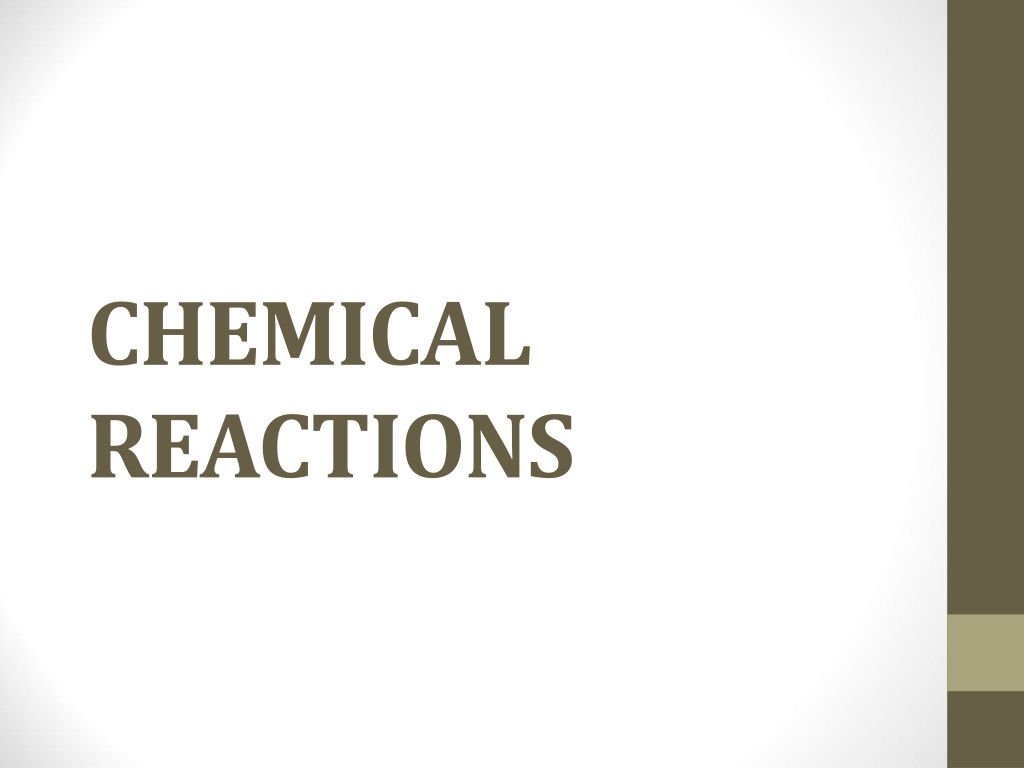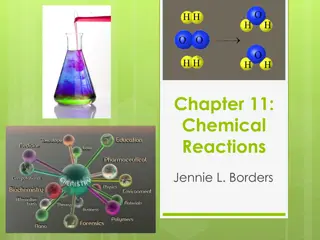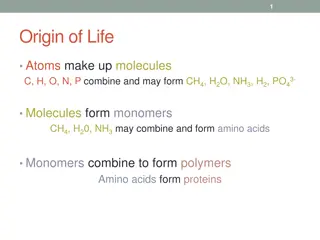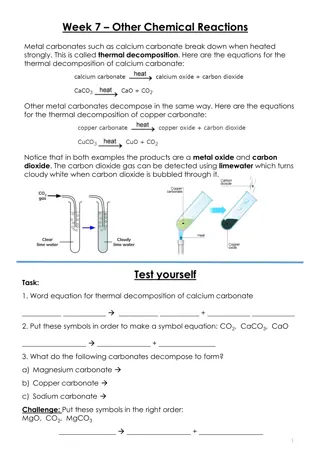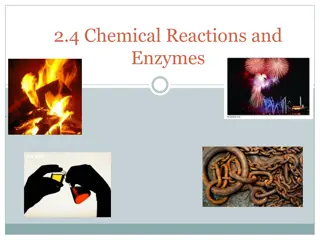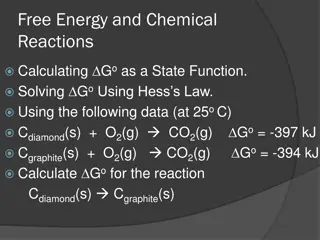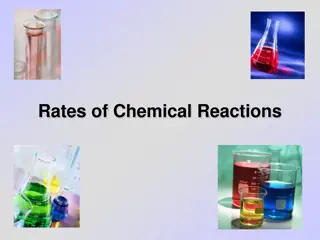Understanding Energy in Chemical Reactions
Chemical reactions involve the release or absorption of energy in various forms like heat, light, sound, and electricity. Exergonic reactions release energy, while endergonic reactions absorb energy. Catalysts speed up reactions, while inhibitors slow them down without changing the amount of reactants or products formed. This dynamic interplay of energy transformations drives the fascinating world of chemical reactions.
Download Presentation

Please find below an Image/Link to download the presentation.
The content on the website is provided AS IS for your information and personal use only. It may not be sold, licensed, or shared on other websites without obtaining consent from the author. Download presentation by click this link. If you encounter any issues during the download, it is possible that the publisher has removed the file from their server.
E N D
Presentation Transcript
CHEMICAL REACTIONS
ENERGY IN CHEMICAL REACTIONS All chemical reactions either release or absorb energy. The energy can take many forms: HEAT, LIGHT, SOUND, and ELECTRICITY Chemical bonds are the source of this energy. When most chemical reactions take place, chemical bonds must be broken and breaking these bonds takes energy. Forming new chemical bonds releases energy.
ENERGY IN CHEMICAL REACTIONS MORE ENERGY OUT: Chemical reactions that release energy are exergonic reactions. Examples include glow sticks, heat packs, burning a match. If heat is the energy released, it is called an exothermic reaction. Thermic means heat.
ENERGY IN CHEMICAL REACTIONS MORE ENERGY IN: Chemical reactions that absorb energy are endergonic reactions. Examples include cold packs and rxns that require electricity to work. If heat is the energy absorbed, it is called an endothermic reaction.
CHEMICAL REACTION SPEED Some reactions proceed too slowly. To speed a chemical reaction up, a catalyst can be used. A catalyst is a substance that speeds up a chemical reaction without being permanently changed itself. The catalyst is there at the beginning of the reaction and it is there at the end of the reaction. The catalyst can be recovered and used again. Example: when you cut an apple and it turns brown, that is due to an catalyst/enzyme which speeds up the browning process.
CHEMICAL REACTION SPEED Some reactions need to be slowed down. To slow down a chemical reaction, an inhibitor can be used. An inhibitor is a substance that slows down a chemical reaction or prevents it from occurring by bonding with a reactant. This ties up the reactant so it cannot form the original product. Example: You can pour lemon juice on your cut apple to prevent the catalyst/enzyme from reacting.
CHEMICAL REACTION SPEED Catalysts and inhibitors do not change the amount of reactants used or products formed. They only change the speed of the reaction.
TO DO Watch: Exothermic and Endothermic Reactions DO: Energy and Chemical Reactions on the back side of the Classifying Reactions handout. Due tomorrow. Vocabulary Quiz is Thursday
